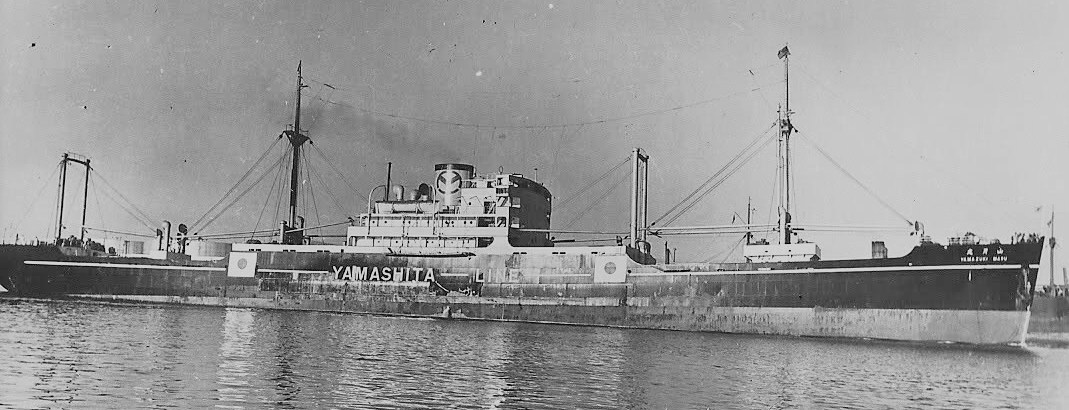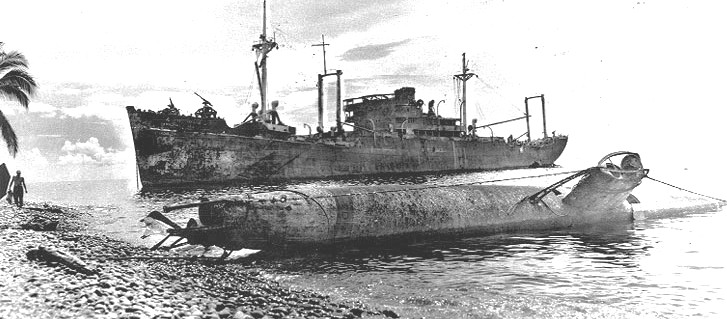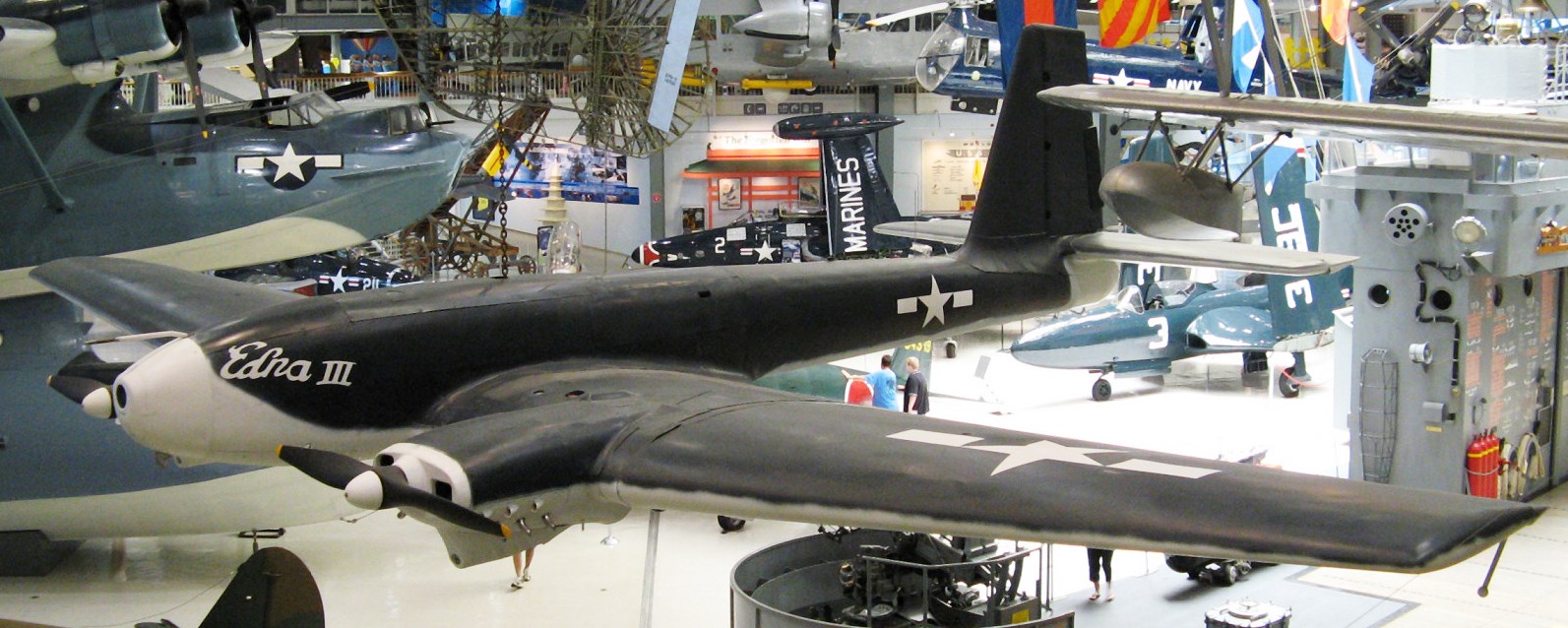RIKUGUN YUSOSEN
 (YAMATSUKI MARU, prewar)
(YAMATSUKI MARU, prewar)
YAMATSUKI MARU:
Tabular Record of Movement
© 2014-2016 Bob Hackett
Revision 1
15 July 1937:
Osaka. Yokahama. Laid down at Mitsubishi Shipbuilding &
Engineering Company as Yard No. 284, a 6,439 ton cargo ship for Taiyo Kaiun. K. K of Kobe.
3 December 1937:
Launched and named SANGETSU MARU. [1] [2]
1938:
During construction, the ship is sold to Yamashita Steamship Co., Ltd. of
Kobe. Renamed YAMATSUKI MARU.
19 February 1938:
Completed.
15 November 1941:
Requisitioned by the Imperial Army (IJA) and converted to a
troop transport. Alloted IJA No. 982.
16 December 1941: The Occupation of Davao, Mindanao, Philippines:
YAMATSUKI MARU. is assigned to the Philippines Invasion Group under command
of Vice Admiral Takahashi Ibo’s (36) Third Fleet as part of the Davao Invasion
Unit under command of Rear Admiral (later Vice Admiral) Irifune Naosaburo (39).
The Japanese main invasion at Lingayen Gulf consists of three transport
echelons and carries the main part of LtGen Homma Masaharu's 80,000-man 14th
Army. The first echelon is composed of 27 transports from Takao under Rear
Admiral Hara , the second echelon of 28 transports under Rear Admiral (later
Vice Admiral) Nishimura Shoji (39) and the third echelon of 21 transports from
Keelung under Rear Admiral (later Vice Admiral) Hirose Sueto (39).
The occupation of Davao is a combined IJN/IJA operation which involves
General (later Field Marshal) Count Terauchi Hisachi’s command’s Southern
Expeditionary Army. The 16th Army, under LtGen (later General) Imamura Hitoshi
fields MajGen (later LtGen) Sakaguchi Shizuo's “Sakaguchi” Detachment of about
6,000 troops consisting of the 56th Division’s 56th HQ Company (Coy), 146th
Infantry Regiment, 2nd Btn of 56 Art Rgt with 12 75mm field guns, one Tank Coy,
one Eng Coy, one Transport Coy, one Signal unit platoon, 56th medical Unit Field
Hospital Unit and the “Miura” Detachment of about 1,200 troops of the 16th Div’s
Heavy weapons Coy of 33th Inf Rgt, 3rd Inf. Bn. and two Eng. platoons of the
56th Div. Two AA and one Signals Regiment are stationed on IJA transports.
The invasion units are embarked on eight IJA transports: YAMATSUKI,
HANKOW, HAVANA, HITERU, KANKO, KURETAKE, LIVERPOL and TEIRYU (ex-German
AUGSBURG) MARUs.
The Navy force consists of Vice Admiral (later Admiral) Kondo Nobutake's
(35) (former CO of KONGO) Southern Force, Philippines Invasion Group that
includes Vice Admiral Takahashi Ibo’s (36) (former CO of YAMASHIRO) Third Fleet.
Rear Admiral (later Vice Admiral) Irifune Naosaburo (39) Invasion Unit consists
of his 32nd Special Base Force aboard TONAN MARU No 2, elements of 103rd Aerial
Field Repair Shop and a detachment of 3rd Munitions Unit aboard KINUGASA MARU, a
company of the No.1 Kure Special Naval Force (SNLF) aboard AMAGISAN MARU, 2nd
Construction Unit Rgt, aboard TAITO MARU and 3rd Construction Unit Rgt aboard
KOSHIN MARU.
Other transports are EIKO MARU No.2 GO, TENRYU, KIRISHIMA and TATSUKAMI
MARUs transporting equipment and material for the future Davao and Jolo
airbases.
The convoy’s close escort consists of minelayer SHIRITAKA and patrol
boats PB-36 and PB-37. Cover is provided by Rear Admiral (later Vice Admiral)
Tanaka Raizo’s (41) light cruiser JINTSU, DesDiv 15’s HAYASHIO, NATSUSHIO,
OYASHIO and KUROSHIO and DesDiv 16's YUKIKAZE, HATSUKAZE and AMATSUKAZE. Rear
Admiral (Admiral posthumously) Takagi Takeo’s (39) (former CO of MUTSU) CruDiv
5's NACHI, MYOKO and HAGURO provide distant cover. Air cover is provided by
light carrier RYUJO and seaplane carrier CHITOSE.
The convoy is subdivided in three divisions:
1st subdivision:
YAMATSUKI (IJA), KIRISHIMA (IJN), TAITO (IJN), KINUGASA (IJN) and AMAGISAN (IJN)
MARUs.
2nd subdivision: TONAN MARU No. 2 (IJN), TENRYU (IJN), TEIRYU
(ex-German AUGSBURG) (IJA) (carrying elements of the 3rd Munitions Unit &
the 103rd Aerial Field Repair Shop) and KURETAKE (IJA) MARUs, escorted by
minelayer SHIRATAKA and destroyers AMATSUKAZE and OYASHIO.
3rd subdivision:
HANKOW (IJA), HAVANA (IJA), TATSUKAMI (IJN), and KOSHIN (IJN) MARUs and EIKO
MARU No. 2 GO (IJN).
16 December 1941:
At 1600, the 3rd subdivision departs Palau.
17 December 1941: At 0700, the 2nd subdivision departs Palau. At 1300,
the 1st subdivision departs Palau.
19 December 1941:
200 miles E of Davao. In the afternoon, RYUJO
launches six planes to attack the radio station at Cape San Augustin, at the
eastern tip of Davao Gulf, while seaplane carrier CHITOSE launches planes to
reconnoiter Davao.
20 December 1941:
The transports arrive off Davao after midnight. At
0145, the 1st subdivision arrives at Tibungko Anchorage (15 km NNE of Davao). At
0320, the 3rd subdivision arrives at Talomo Anchorage (6 km SW of Davao). At
0440, the 2nd subdivision arrives at Tibungko Anchorage At 0500, troops of LtCol
Miura Toshio's 33rd Infantry Regiment's detachment, covered by RYUJO's aircraft,
begin landing in the northern section of Davao while elements of the Sakaguchi
Detachment come ashore along the coast SW of the city. Resistance by the
garrison of some 3,500 Filipino-American troops is quickly overcome and, by
1500, that same day, Davao and its airfield are occupied. That evening a
seaplane base is established S of the city. 29 December 1941:
YAMATSUKI MARU departs Davao for Takao in a convoy also consisting of
auxiliary transports OKITSU and TAITO MARUs and auxiliary aircraft transport
LYONS MARU escorted by destroyer AMATSUKAZE.
18 February 1942: Operation "J" - The Invasion of Java, Netherlands East
Indies:
YAMATSUKI MARU is attached to Vice Admiral Takahashi's Third Fleet,
Southern Force, Netherlands East Indies Force in Vice Admiral Ozawa Jisaburo’s
Western Java Seizure Force. Departs Camranh Bay in a convoy comprised of 56
troop transports. They carry the 2nd Infantry Division for the invasions of
Merak, Bantam Bay and Eretan, Java escorted by light cruisers NATORI, and YURA
and DesDivs 5, 6, 11, 12 and 22. Seaplane tender SANYO MARU provides air cover.
Forty-five transports go to Merak and Bantam Bay Java. YAMATSUKI MARU and
six transports go to Eretan Wetan including CALCUTTA, GLASGOW, HOFUKU, SUWA,
UCHIDE and YAE MARUs.
YAMATSUKI MARU carries elements of Colonel Shoji Toshishige’s Detachment
(“Shoji Detachment”) consisting of the 38th Infantry Division’s 230th Infantry
Regiment, a Mountain Artillery Battalion, an Airfield Battalion, an Anti-Tank
Battalion, an AA Battery, an Engineer Company, a Light Tank Company, two
Independent Engineer Companies, a Motor Transport Company, the 40th Anchorage
Headquarters and a platoon of the Bridge Material Company.
1 March 1942:
The seven transports arrive at Eretan Wetan, Java and
land troops.
5 March 1942:
All seven transports depart Eretan Wetan for Singapore
and arrive that day.
19 March 1942:
YAMATSUKI MARU departs Singapore in a convoy also
consisting of AOBASAN, GENOA, GLASGOW, HARUNA (10420 grt), HAVRE (5467 grt),
HIBURI, HOKUMEI, HOFUKU, KAZUURA, KIZAN, KOAN, KOTOHIRA, KUSUYAMA, MYOKO (4103
grt), MOMOYAMA, NAGARA, NAKO, NAPLES, NICHIRAN, SAKITO, SANKO, SHINAI,
SHINANOGAWA, SHINRYU, SHUNSEI, SUMATRA, SYDNEY, TATEISHI, TOKIWA, TSUYAMA and
YAE MARUs. The convoy carries the IJA's 56th Infantry Division.
Escort is provided by No. 2 Escort Unit comprised of light cruiser KASHII
(F), kaibokan SHIMUSHU, destroyers of DesRon 3 and 5, 9th Base Force's gunboat
EIKO MARU, Minesweeper Division 1's W-1, W-3 and W-4 and Special Minesweeper
Division 91's CHOKO MARU and SHONAN MARU Nos. 5 and 7. 21 March 1942:
At
0858, minelayer HATSUTAKA departs Penang, Malaya (Malaysia) and joins the
convoy’s escort. Minelayer EIKO MARU follows later that day.
23 March 1942: Operation "D" - The Invasion of the Andaman
Islands:
The No. 2 Escort Unit covers the unopposed landing of one battalion
of the IJA 18th Infantry Division at Port Blair, Andamans.
25 March 1942:
The transports begin landing troops at Rangoon, Burma.
3 June 1942 :
YAMATSUKI MARU departs Mutsure in the RIKU convoy also
consisting of AKIURA, HIROKAWA, KANSAI, KINUKAWA, NAKO, SAGAMI, SHINANOGAWA and
YAMAZATO MARUs escorted by destroyers FUYO and WAKATAKE and torpedo boats
HAYABUSA and SAGI.
8 June 1942:
Arrives at Manila.
2 July 1942:
YAMATSUKI MARU departs Manila in convoy "E" also
consisting of ASAKASAN, HIROKAWA, SADO and SAGAMI, SHOHO and YAMAZATO MARUs
escorted by destroyer MOCHITZUKI.
6 July 1942:
Arrives at Mako and departs that same day.
8 July 1942:
Arrives at Ujina.
7 August 1942: American Operation "Watchtower" - The Invasion of
Guadalcanal, British Solomons:
Rear Admiral (later Admiral) Richmond K.
Turner's (former CO of ASTORIA, CA-34), Amphibious Task Force 62, covered by
Vice Admiral (MOH/later Admiral) Frank J. Fletcher's (former CO of VERMONT,
BB-20) Task Force 61 and Rear Admiral (later Admiral) John S. McCain's (former
CO of RANGER, CV-4) Task Force 63's land-based aircraft, lands MajGen (later
General/MOH/Commandant) Alexander A. Vandegrift's 1st Marine Division on
Florida, Tulagi, Gavutu, Tanambogo and Guadalcanal opening the campaign to
retake the islands.
2 October 1942:
YAMATSUKI MARU arrives at Rabaul, New Britain in an
unidentified convoy probably also consisting of BRISBANE, NAKA, SHINANOGAWA and
YAMAURA MARUs and several unidentified ships with an unknown escort.
6 November 1942:
At 1400, YAMATSUKI MARU departs Rabaul for the
Shortland Islands, Solomons in an unnumbered convoy also consisting of ARIZONA,
NAGARA, OIGAWA, TEIYO (ex-German SAARLAND), TOYO, SHINANOGAWA, TOYOKUNI and
YUROI MARUs escorted by torpedo boat HIYODORI, minelayer SHIRATAKA, minesweeper
W-15 and subchaser CH-16.
8 November 1942:
At 1020, the convoy arrives at Shortlands.
12 November 1942:
YAMATSUKI MARU departs Shortlands for Guadalcanal,
Solomons with Rear Admiral (later Vice Admiral) Tanaka Raizo's Reinforcement
Group’s troop transports carrying Maj Gen Tanabe Suketomo's 38th Army ("Sendai")
Division and Special Naval Landing Force (SNLF) troops, equipment and provisions
in the No. 2 Butai also consisting of ARIZONA, BRISBANE, KINUGAWA, SHINANOGAWA
and YAMAURA MARUs accompanied by the No. 1 Butai consisting of CANBERRA,
HIROKAWA, NAGARA, NAKO and SADO MARUs all escorted by DesRon 2’s AMAGIRI,
HAYASHIO, KAGERO, KAWAKAZE, MAKINAMI, MOCHIZUKI, NAGANAMI, OYASHIO, SUZUKAZE,
TAKANAMI and UMIKAZE. No. 2 Butai is to unload at Argulio Point, near Cape
Esperance while the faster No. 1 Butai is to unload at Tassafaronga.
The convoy is scheduled to arrive at Guadalcanal that night, but is
recalled back to Shortland, due to the “First Naval Battle of Guadalcanal” that
day that resulted in the disabling (and later sinking) of battleship HIEI,
sinking of destroyer AKATSUKI, disabling of destroyer YUDACHI and damage to
destroyers AMATSUKAZE and MURASAME.
13 November 1942:
At 1730, YAMATSUKI MARU again departs Shortlands for
Guadalcanal, Solomons with Rear Admiral (later Vice Admiral) Tanaka Raizo's
Reinforcement Group’s ten other troop transports and 11 destroyers. Air cover is
provided by the 11th Air Fleet and the R-Area Air Force's floatplane fighters.
14 November 1942:
At 0849, as Tanaka's Reinforcement Group proceeds
down the "Slot" between the New Georgia and Santa Isabel Islands, the 23-ship
convoy is sighted by two reconnaissance Douglas "Dauntless" SBD dive-bombers
from USS ENTERPRISE (CV-6). At 0908, the SDBs each attack a transport, but miss.
One SBD is shot down by Japanese fighters.
N of Guadalcanal. At 1250, 18 Marine Corps SBD dive-bombers and seven USN
Grumman "Avenger" TBF torpedo-bombers of VT-10 attack the convoy. Mitsubishi
A6Ms shoot down some aircraft, but are engaged by Grumman F4F "Wildcat" fighters
and cannot stop the attack. NAGARA MARU is torpedoed and CANBERRA MARUs is
bombed and sunk. The Americans also damage cargo ship SADO MARU that is detached
to Shortlands with AMAGIRI and MOCHIZUKI carrying among other survivors, MajGen
Tanabe Suketomo, CO of the IJA’s 38th Division and other survivors.
At about 1430, SBD dive-bombers from ENTERPRISE and USMC SBDs of the
"Cactus Air Force" at Henderson Field, Guadalcanal make another attack and set
BRISBANE MARU ablaze until she later sinks by the stern at 08-58S, 159-06E
Destroyer KAWAKAZE rescues 550 survivors. [3]
The remaining four transports YAMATSUKI, HIROKAWA,
KINUGAWA and YAMAURA MARU and four destroyers continue towards
Guadalcanal. After nightfall, they stop west of Guadalcanal, awaiting the
conclusion of the Second Naval Battle of Guadalcanal during the night of 14-15
November.
15 November 1942: The Second Naval Battle of Guadalcanal:
At 0025,
Vice Admiral (later Admiral) Kondo Nobutake (35) (former CO of KONGO), Deputy
Commander of the Combined Fleet, after losing battleship KIRISHIMA, orders “all
units to attack” two enemy battleships 6 miles north of Cape Esperance,
Guadalcanal.
Prior to receipt of Kindo’s order, Rear Admiral Tanaka already had
detached Des Div 15’s OYASHIO and KAGERO with orders to attack any American ship
closing the convoy. At 0033, Rear Admiral (later Vice Admiral) Willis A. Lee
(USNA ’04) aboard Task Force 64’s new battleship USS WASHINGTON (BB-56) spots
the Japanese destroyers laying a smoke screen close ahead to starboard.
WASHINGTON’s CO, Captain (later Vice Admiral) Glenn B. Davis (USNA ’13), orders
a hard starboard turn to avoid the risk of a torpedo attack in the smoke. Lee
orders WASHINGTON to continue the turn and retire southward.
Admiral Kondo orders Tanaka to beach his troop convoy at Tassafaronga.
At, 0051, Tanaka’s remaining four transports get underway from an anchorage
where they had taken refuge during a squall. By about 0400, HIROKAWA and
KINUGAWA MARU’s captains’ beach their ships in the mouth of the Bonegi River
near Tassafaronga. YAMAURA MARU’s captain runs her aground in Doma Cove .
YAMATSUKI MARU is beached at Aruligo Point. Beginning at 0555, American aircraft from Henderson Field plus field artillery begin bombarding the ship. Later, USS MEADE (DD-602 )approaches and opens fire for an hour with 5" shells, leaving the beached ships "blazing with many internal explosions."
These attacks set the transports afire and destroy most equipment not unloaded before dawn. By dawn, about 2,000 troops with 260 cases of ammunition and 1,500 bags of rice made ashore.make shore. Most of their ammunition and food supplies are lost.
1 May 1944:
A Type A Ko-hyoteki Midget Submarine salvaged by the US Navy is towed onto the beach near YAMATSUKI MARU.
 (YAMATSUKI MARU and Type A Midget Submarine beached at Tassafaronga in 1944)
September-October 1944:
(YAMATSUKI MARU and Type A Midget Submarine beached at Tassafaronga in 1944)
September-October 1944:
The wreck of YAMATSUKI MARU is used as a target for tests of the TDR-1 Drone by STAG-1 based at North Field on Banika, Russell Islands as part of the top secret project testing of
America's first guided missile. Four unmanned TDR-1 drones each release a 2,000-pound bomb on YAMATSUKI MARU beached at Guadalcanal. Three bombs hit, but one fails to detonate.[4]
Late 1950s:
The wreck of YAMATSUKI MARU is scrapped. Today, virtually nothing remains of this wreck above sea level.
Author's Notes:
[1] Also known as YAMAZUKI MARU and YAMASUKI MARU.
[2] Richard B. Franks' generally excellent "Guadalcanal" and derivative works such as that by Mark Stile incorrectly refer to YAMATSUKI MARU by her pre-completion name of SANGETSU MARU by which she
was not known.
[3] The Japanese lose about 450 men KIA in the 14 Nov '42 action, although troop losses and other casualties for individual ships are unknown. Altogether, the destroyers rescue more than 4,700 men.
[4] The TDR-1 Torpedo Drone was an early unmanned combat aerial vehicle (assault drone) developed by Interstate Aircraft and Engineering for use by the United States Navy. Powered by two 220 hp Lycoming O-435 engines,
the TDR-1 could carry a torpedo or bombs and was designed primarily as an anti-ship weapon for deployment aboard aircraft carriers. The TDR-1 first saw action in September 1944 when a unit designated STAG-1 deployed
with 50 TDR-1s to the Russell Islands, located about 30 miles W of Cape Esperance, Guadalcanal. During Sep-Oct ‘44, 50 drones were launched with 31 hits recorded on anti-aircraft sites, bridges, airfields and grounded ships
without loss to the pilots of STAG-1. Guided by a modified Grumman TBM-1C “Avenger” torpedo bomber, the drone was launched by a ground control crew, and then turned over to the TBM. The controller in the rear cockpit
then guided the drone to the target, using a 5-inch TV screen receiving visual signals from the TDR's nose-mounted camera. 2000 aircraft were ordered, but only 189 were built. Continuing developmental issues, along with the
success of more conventional weapons, led to cancelation of the TDR-1 program in October. The final mission was flown on October 27, 1944.The Japanese lose about 450 men KIA in the 14 Nov '42 action, although troop losses and other casualties for individual ships are unknown. Altogether, the destroyers rescue more than 4,700 men.
 (TDR-1 at Naval Aviation Museum at Pensacola NAS, FL)
Thanks go to Erich Muehlthaler of Germany and J-air reader SteveC.
Bob Hackett
(TDR-1 at Naval Aviation Museum at Pensacola NAS, FL)
Thanks go to Erich Muehlthaler of Germany and J-air reader SteveC.
Bob Hackett
Back to IJA
Transports







